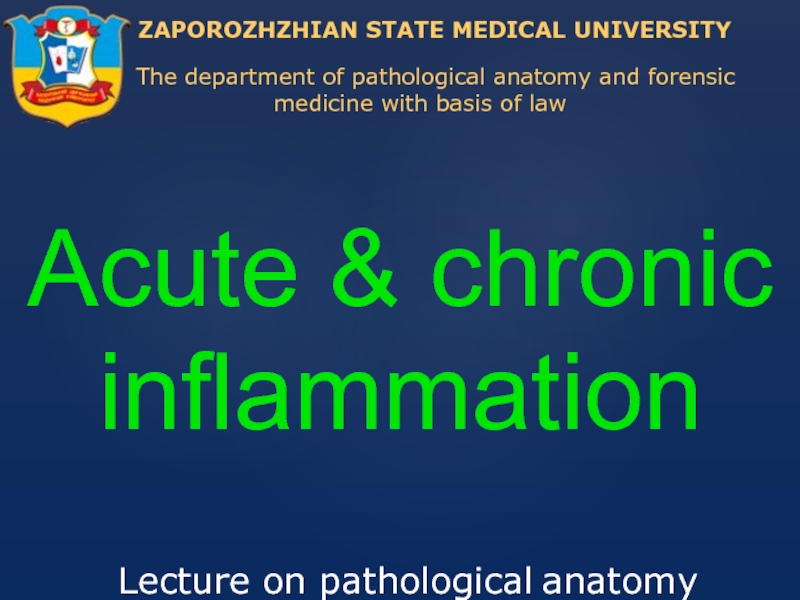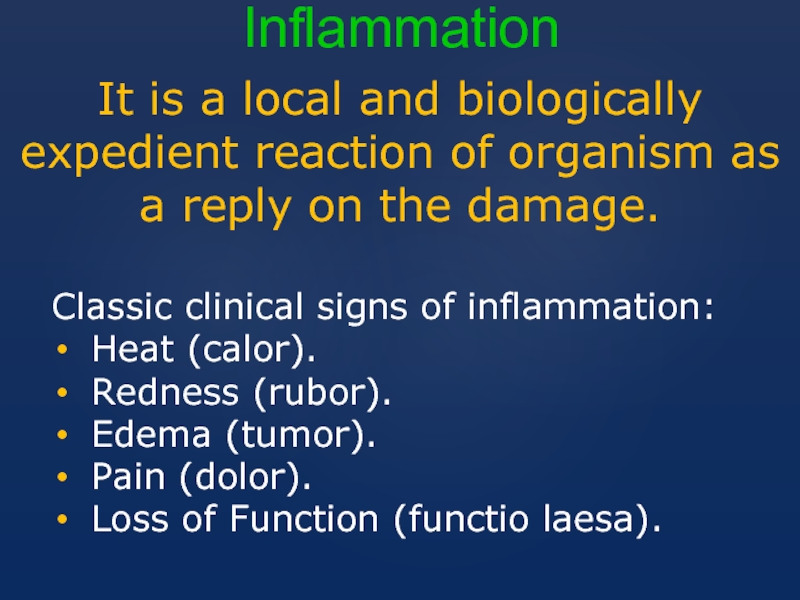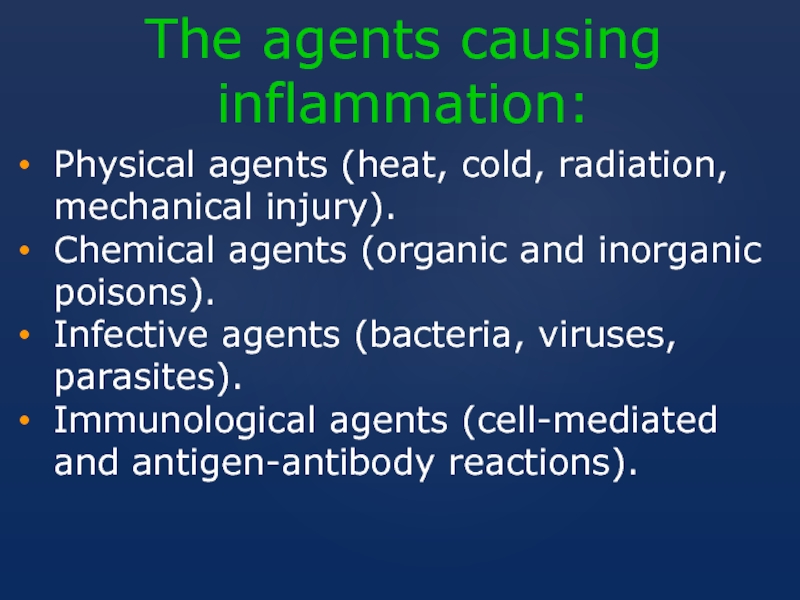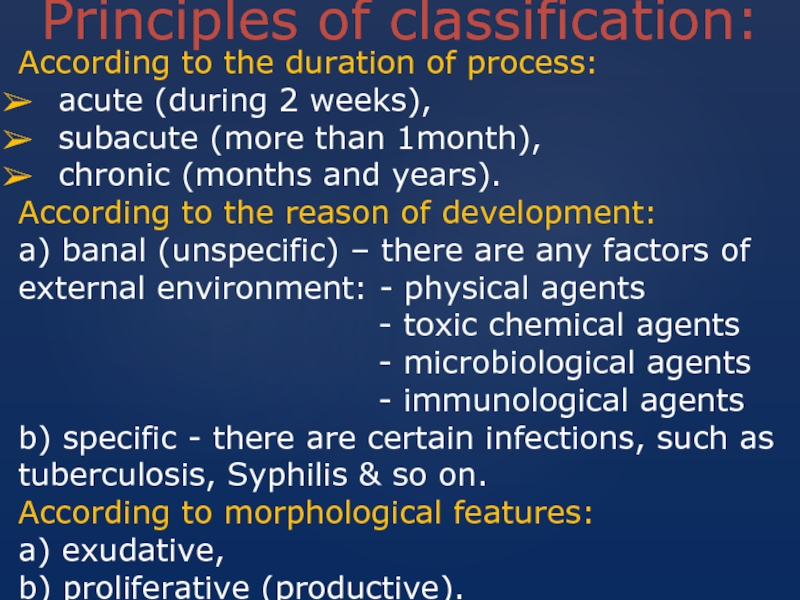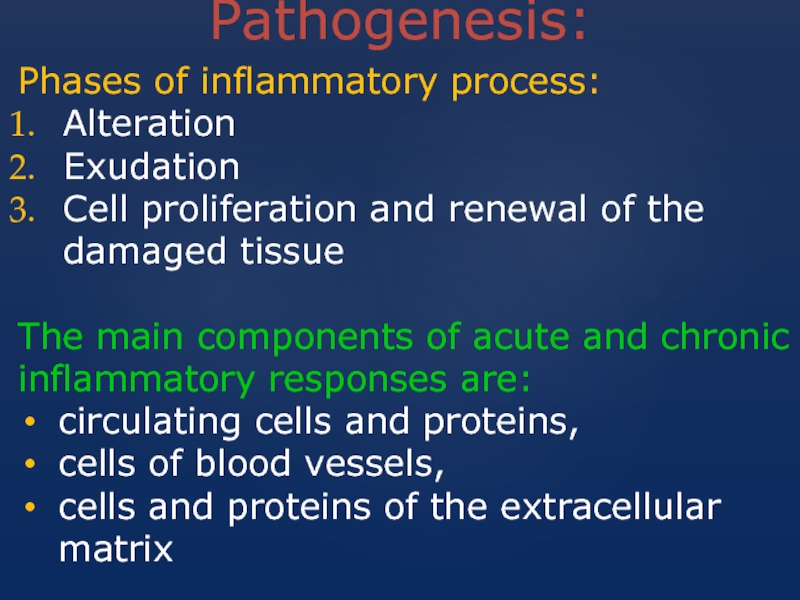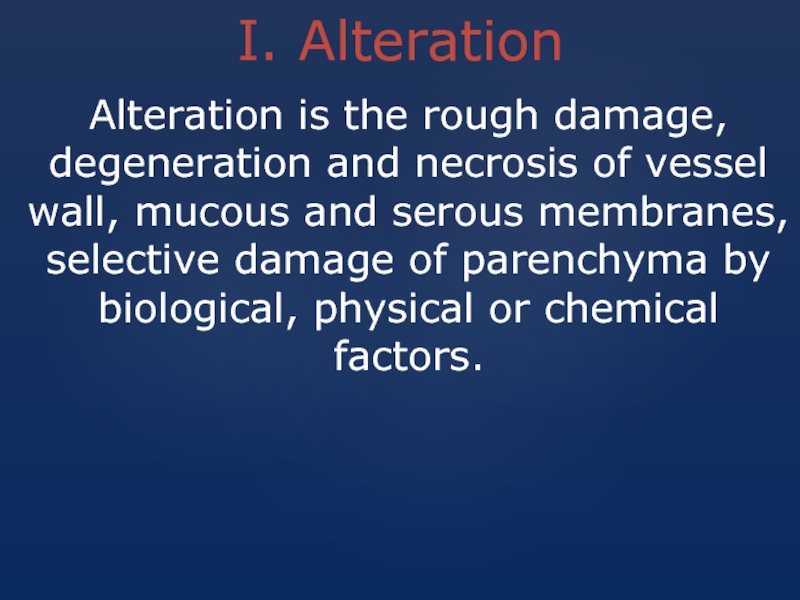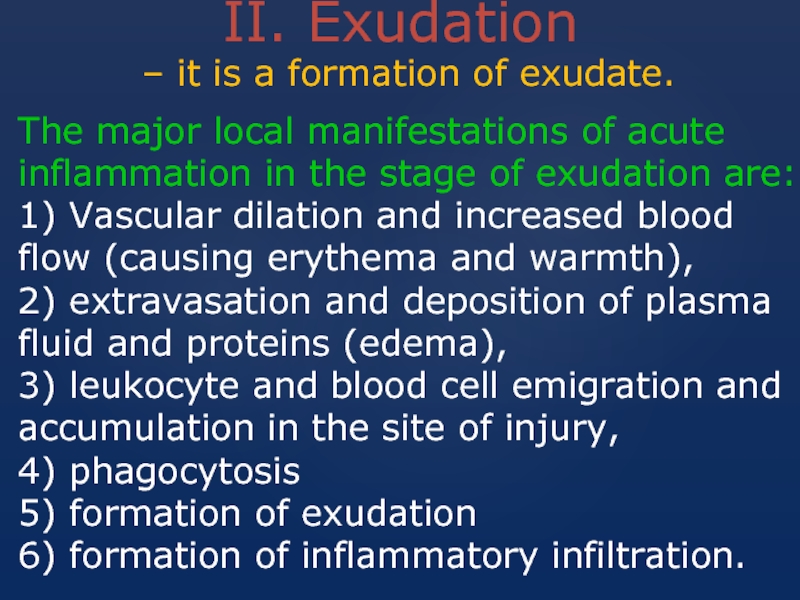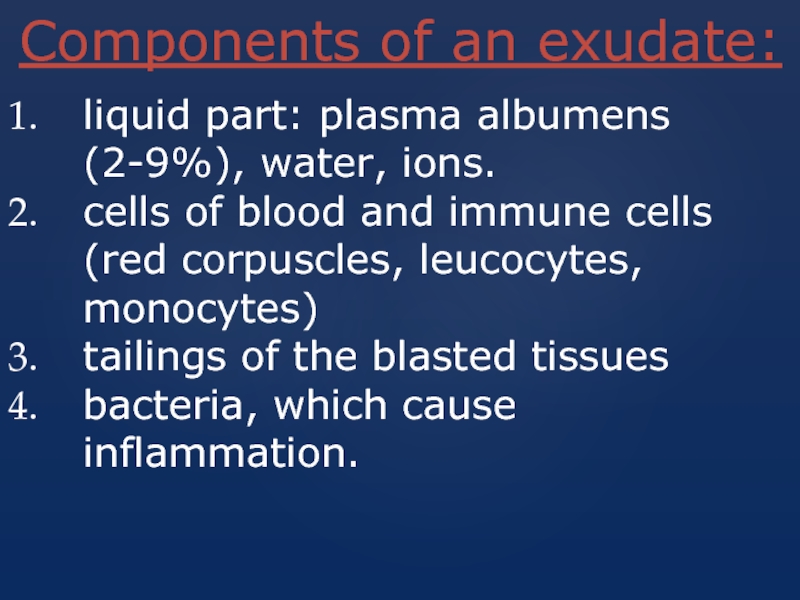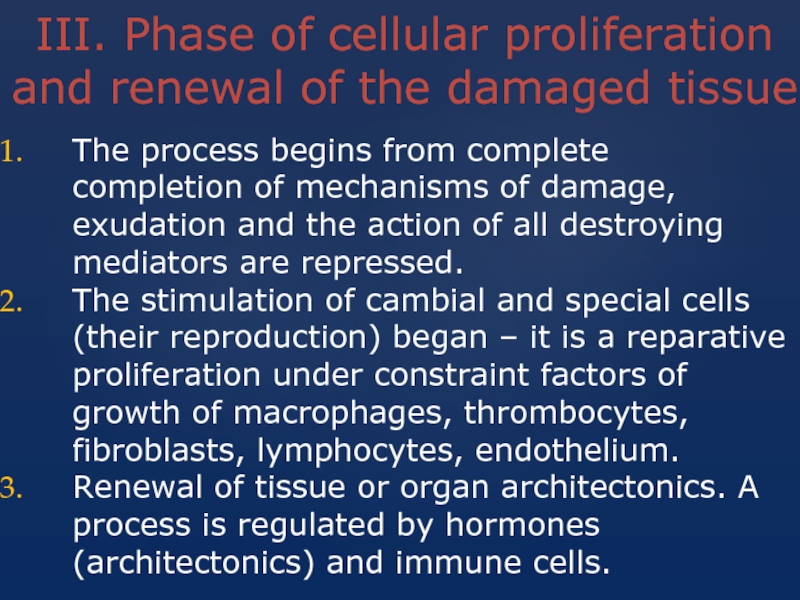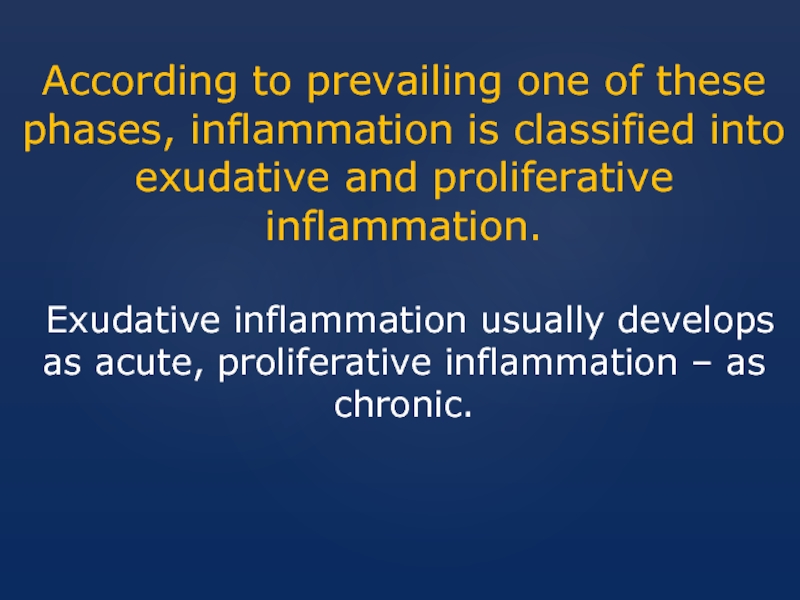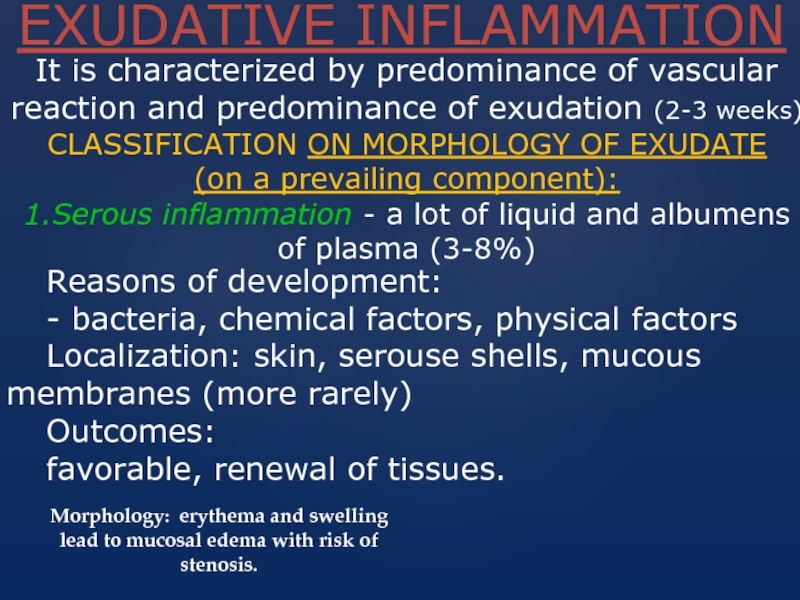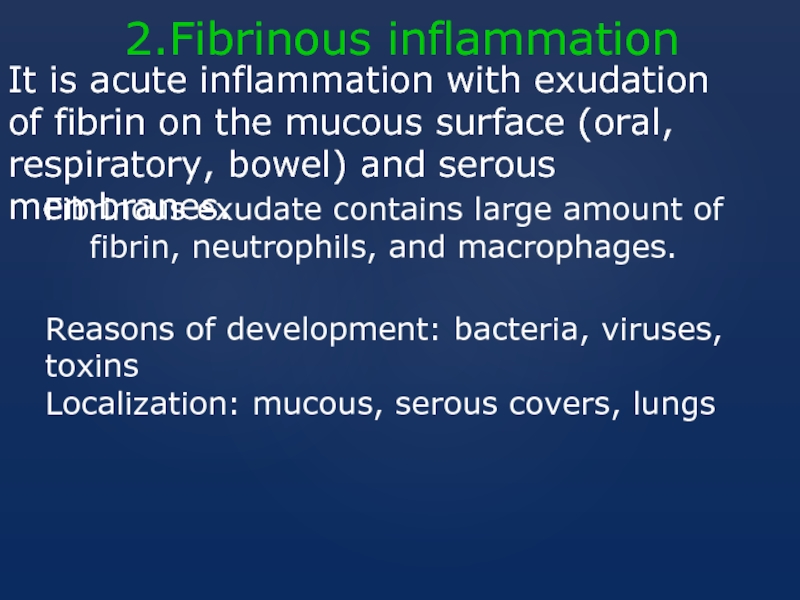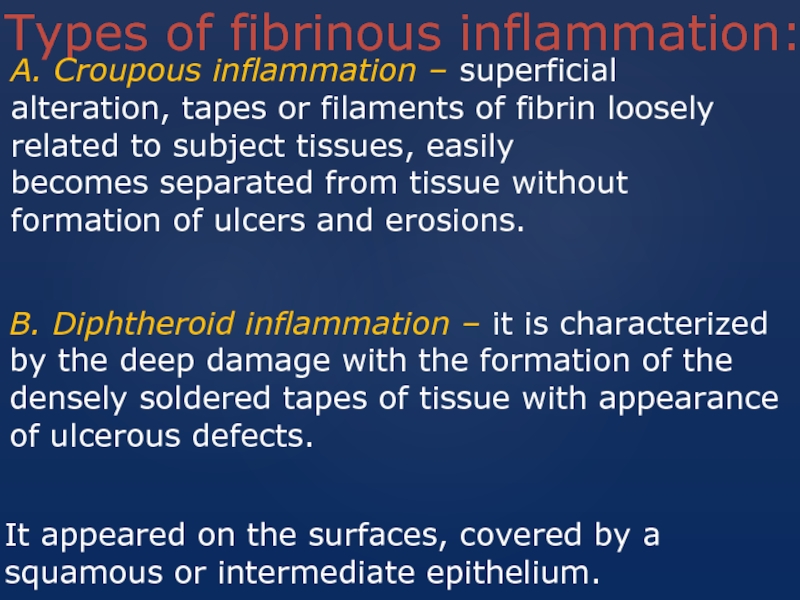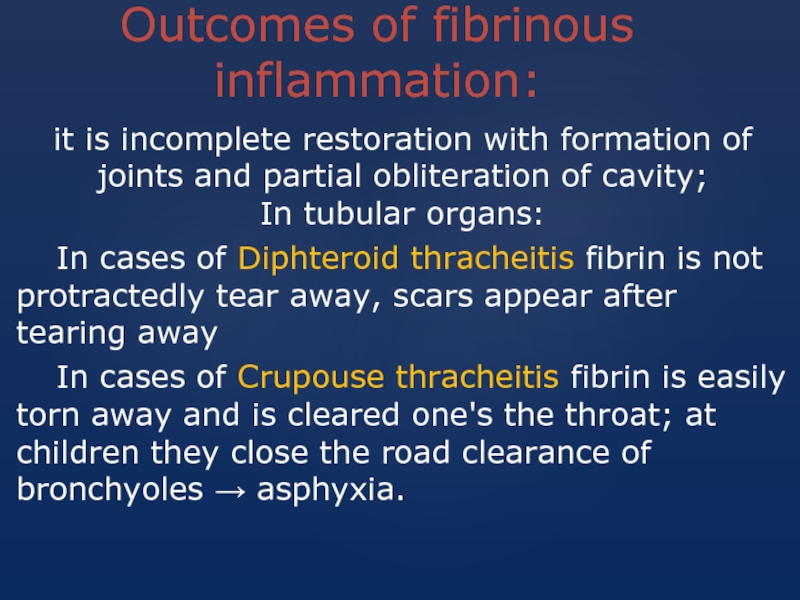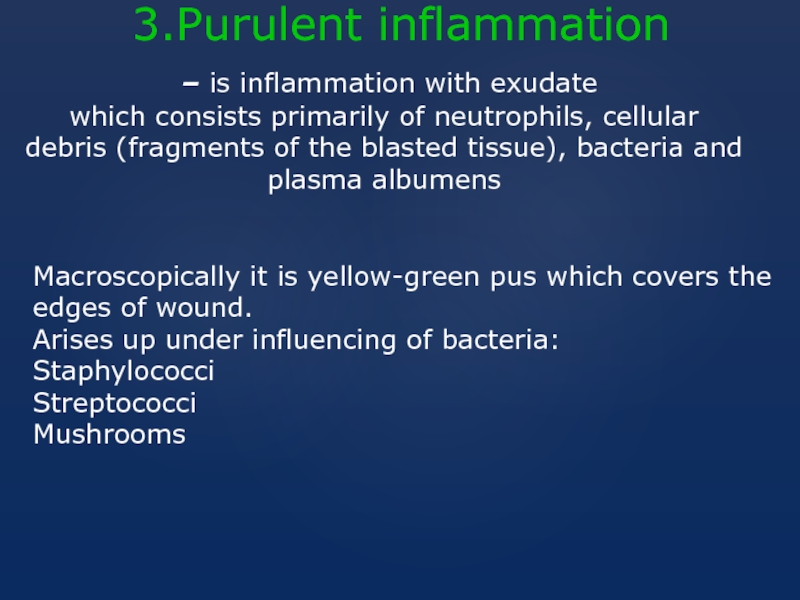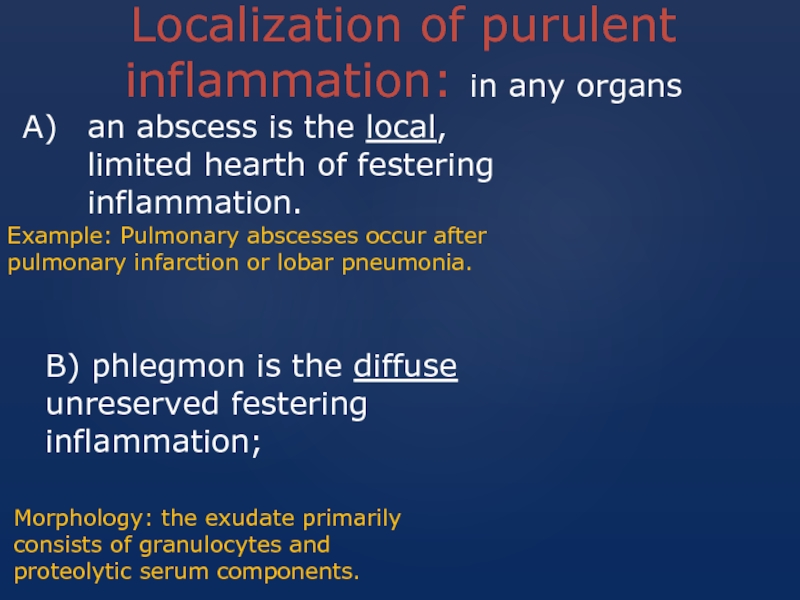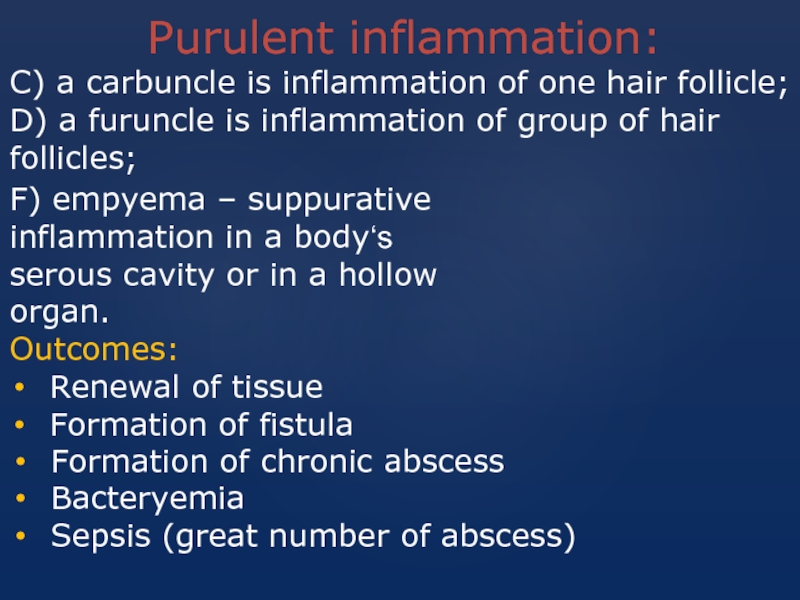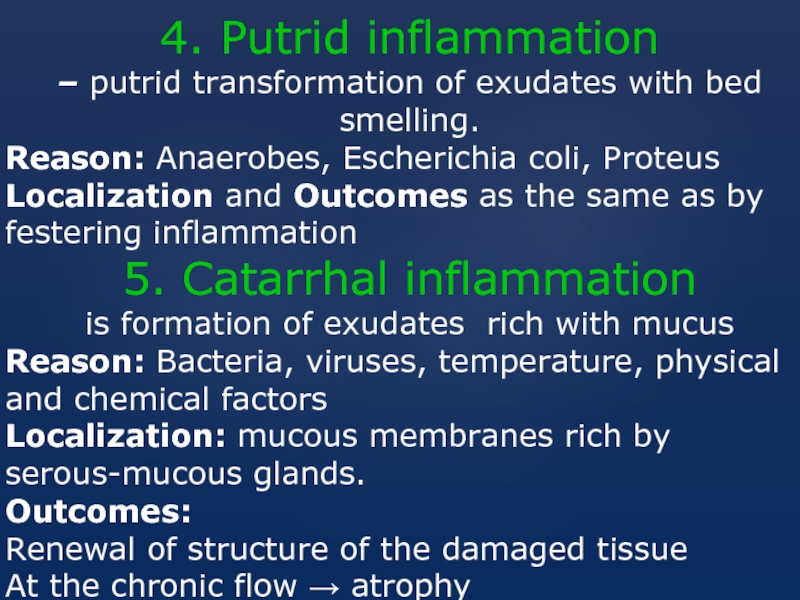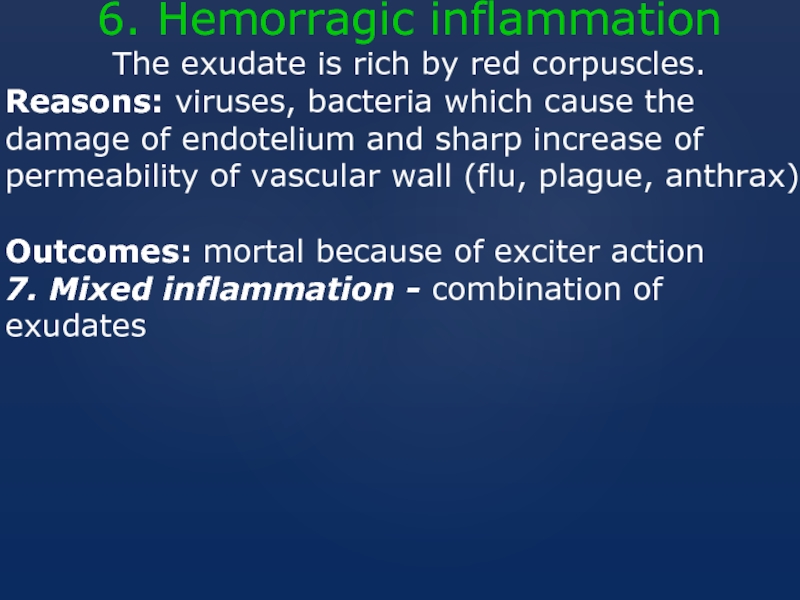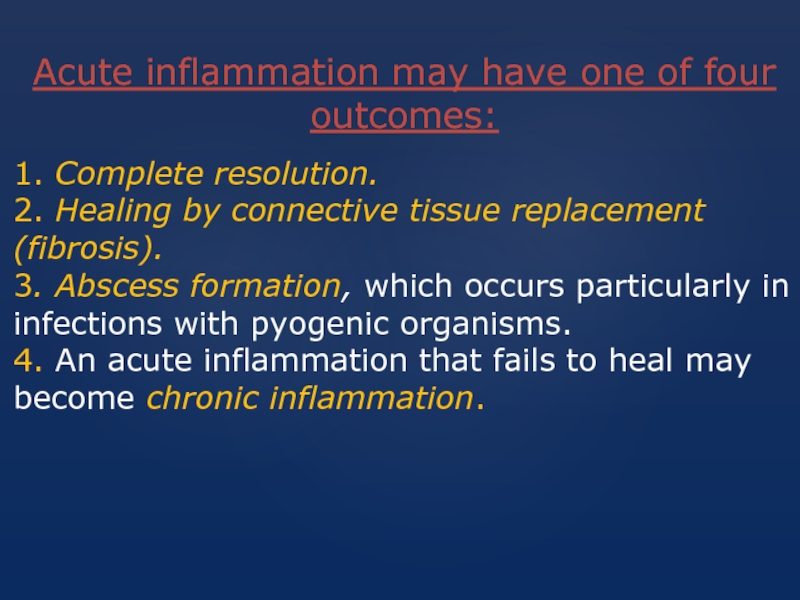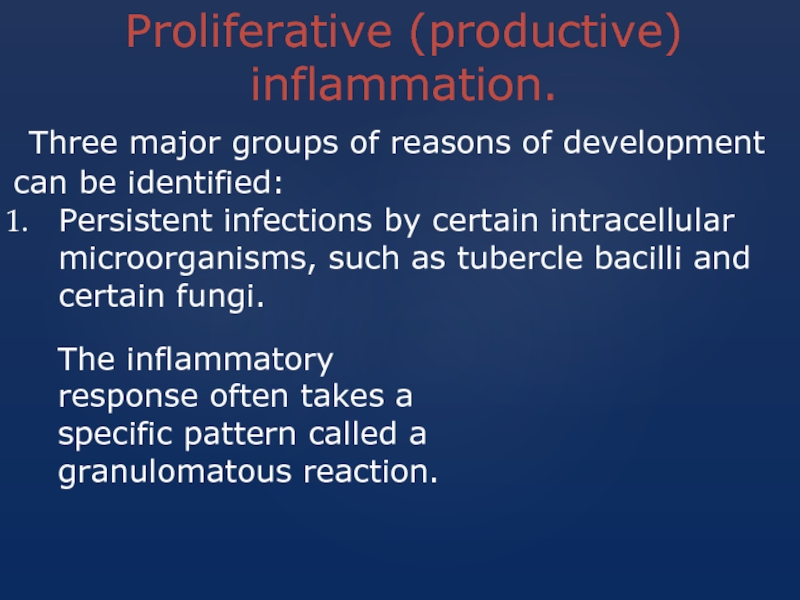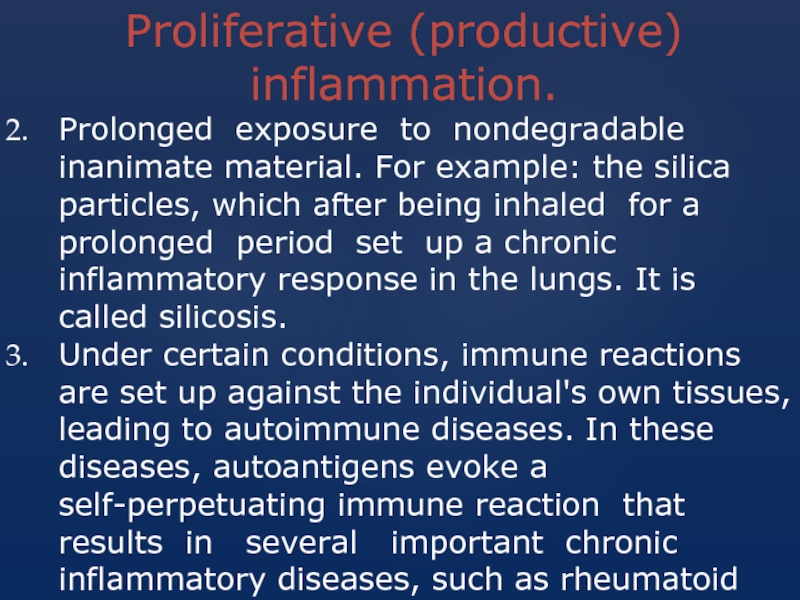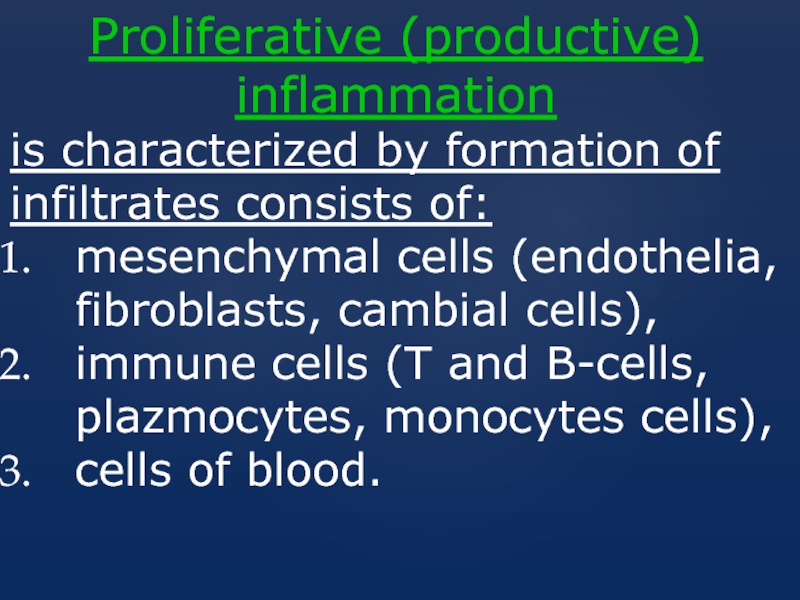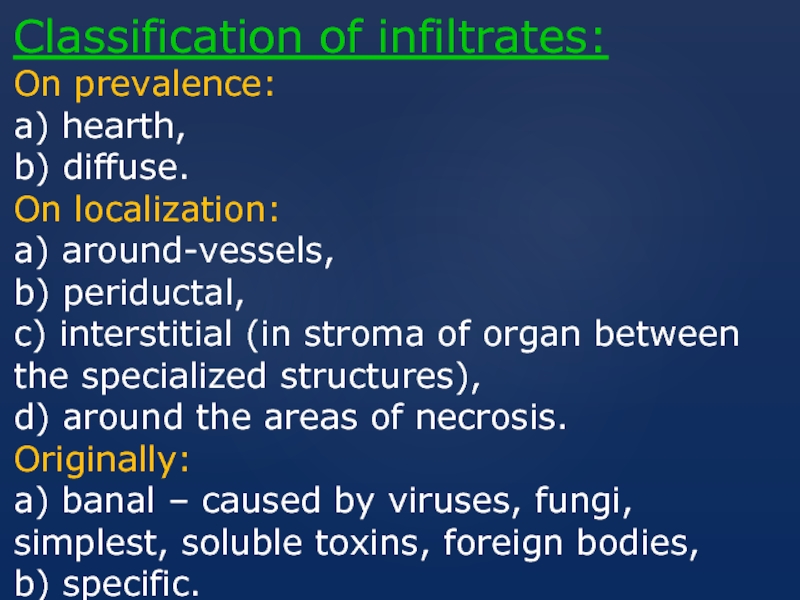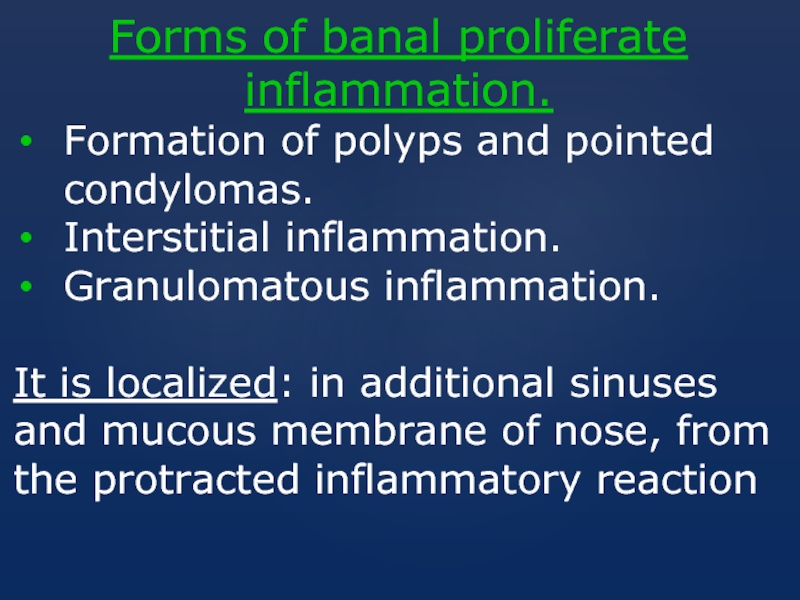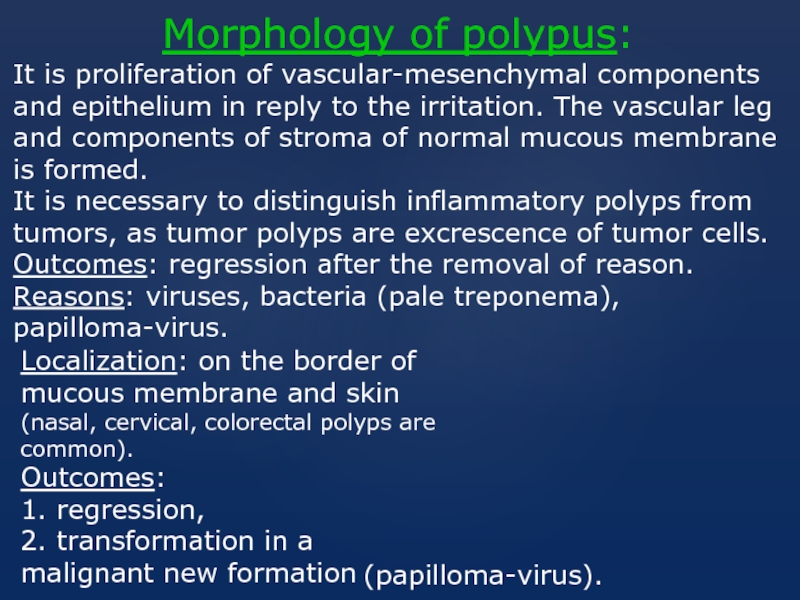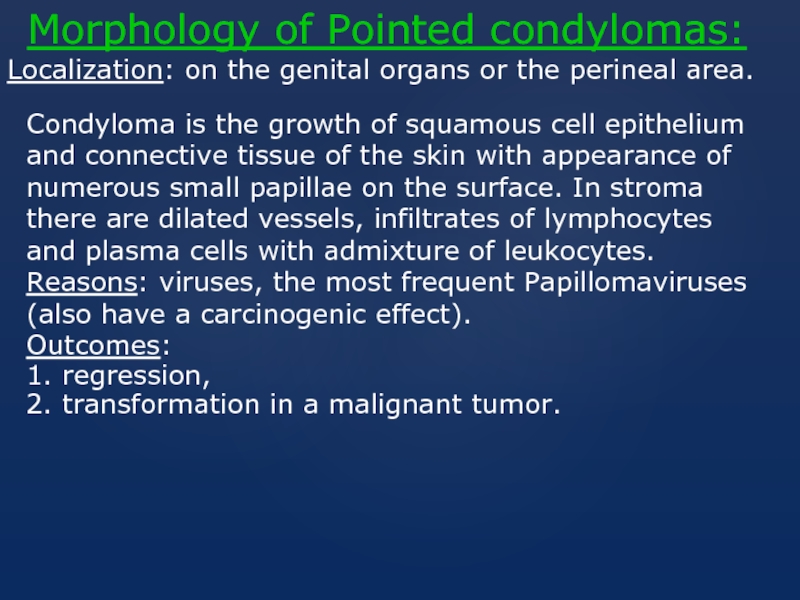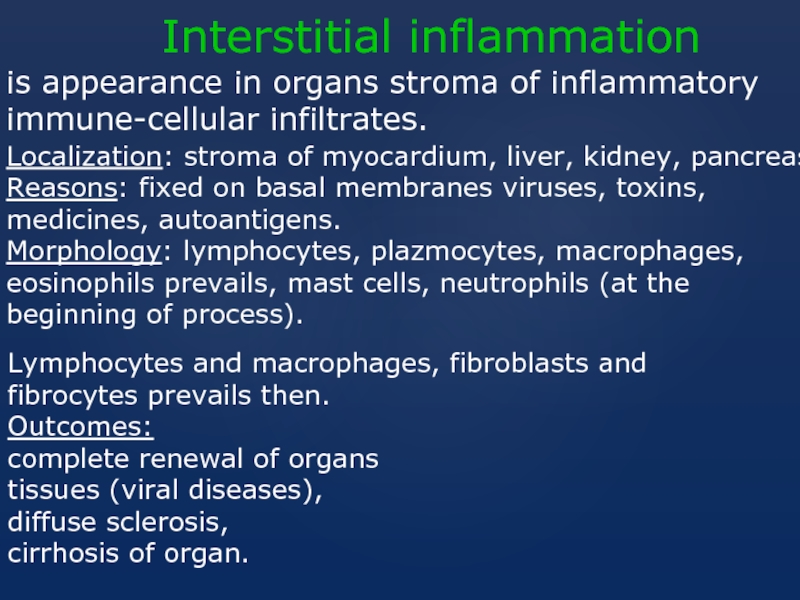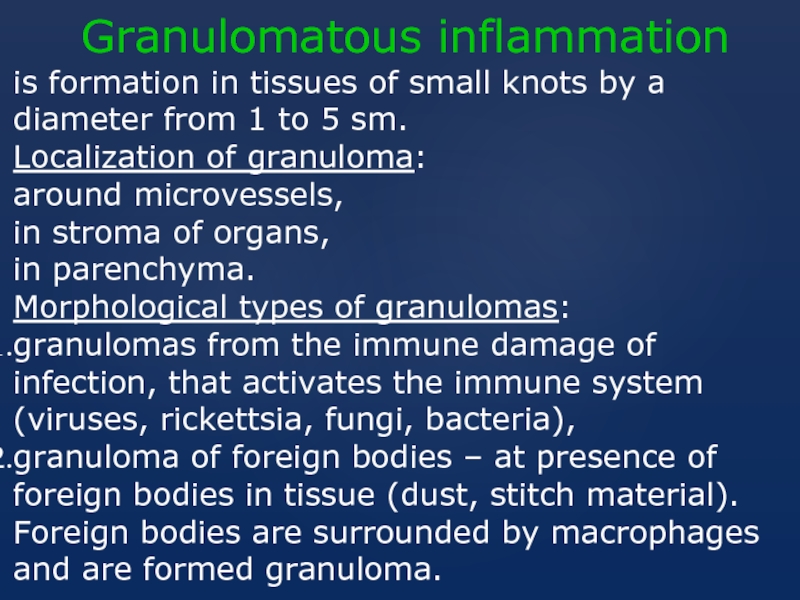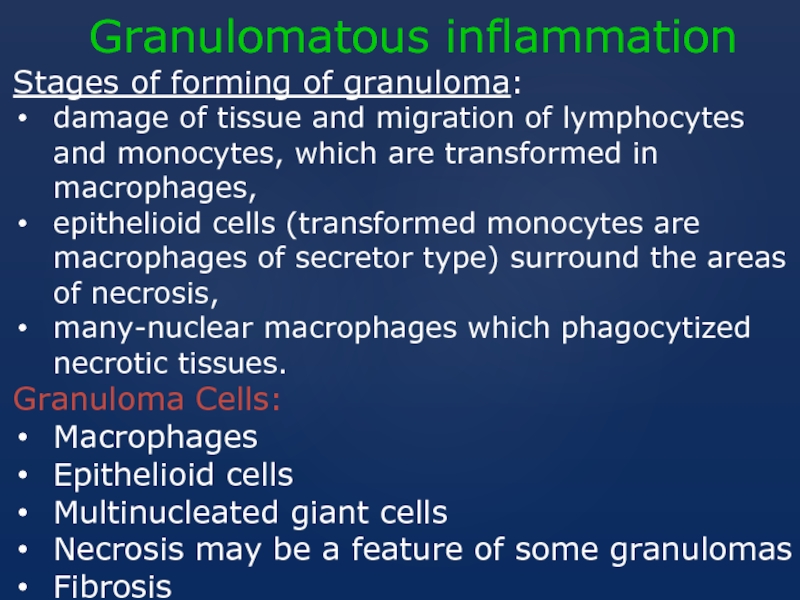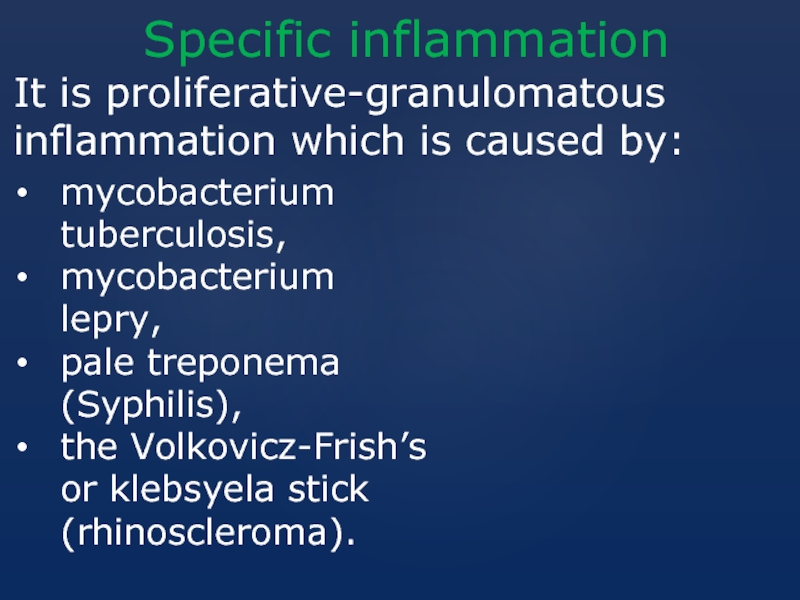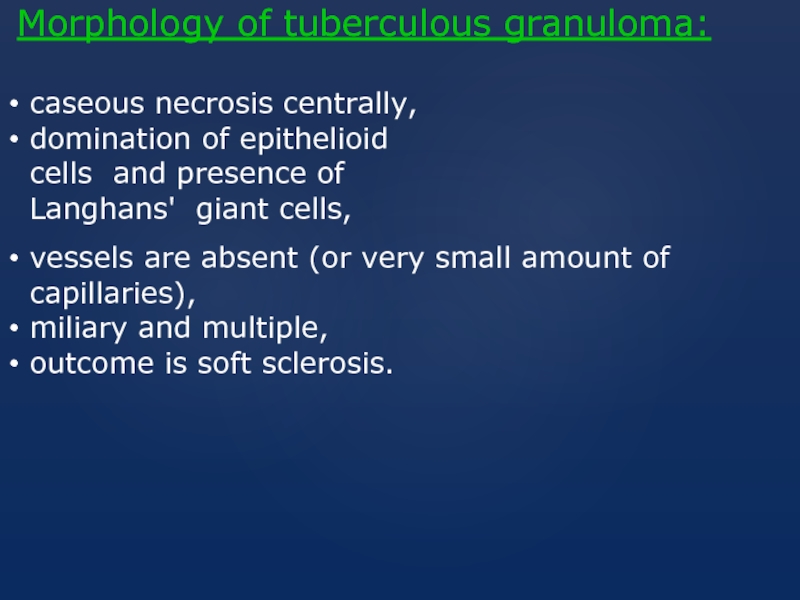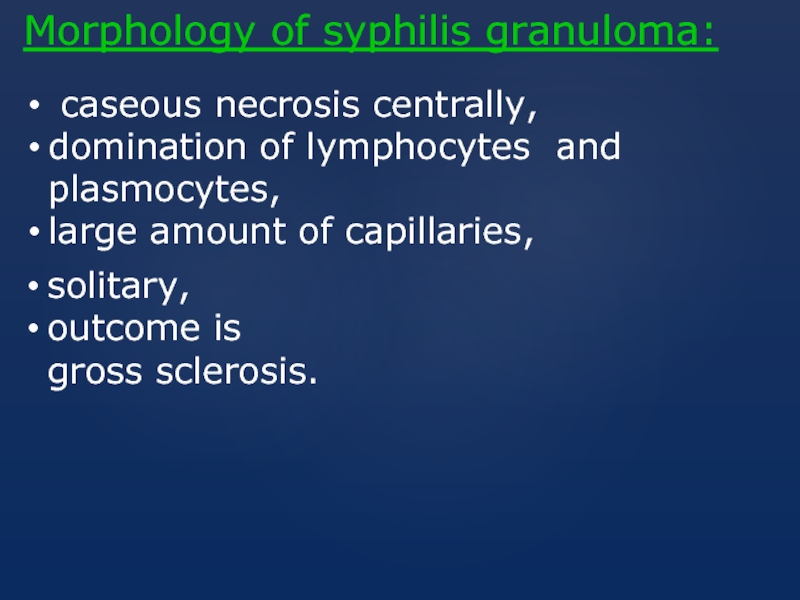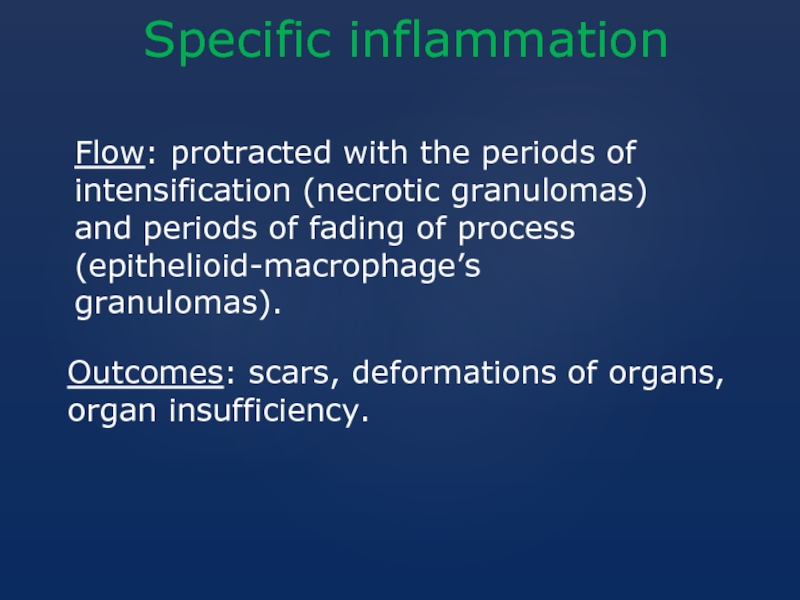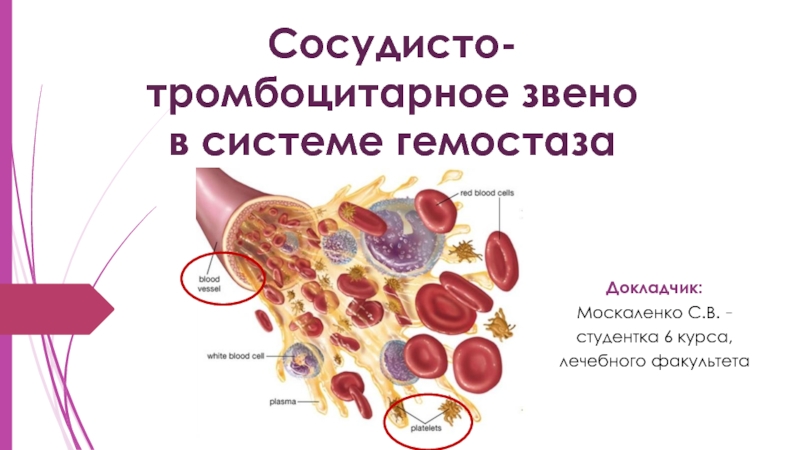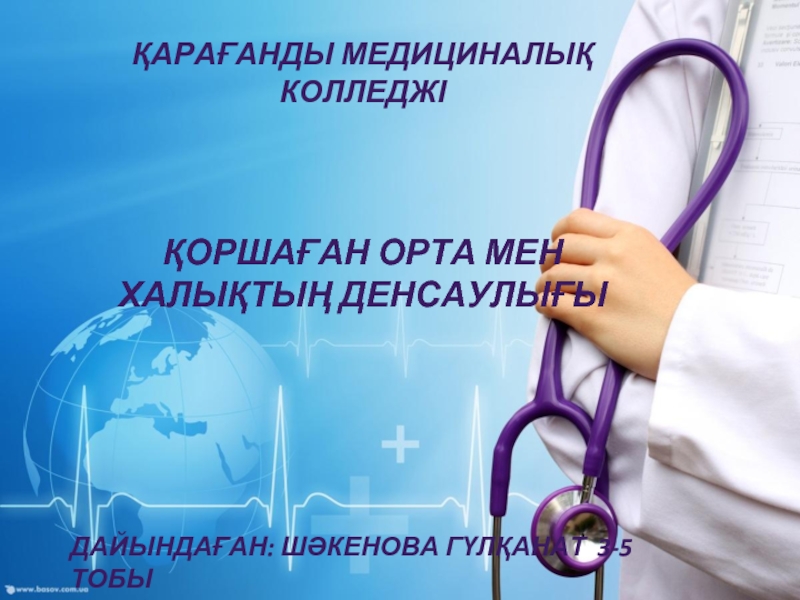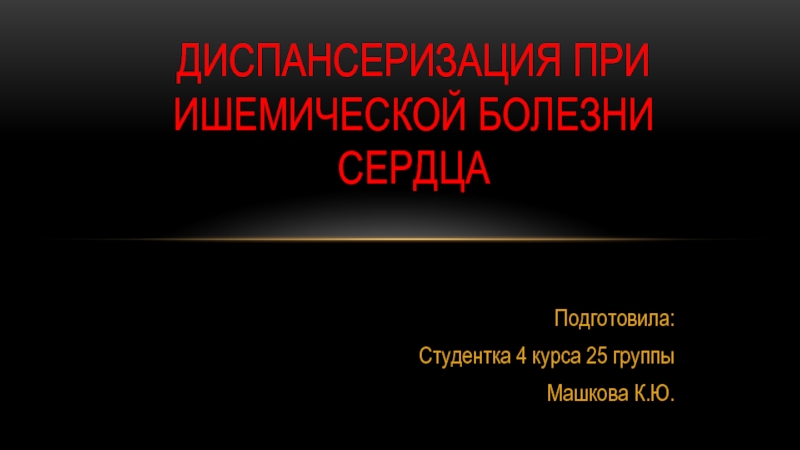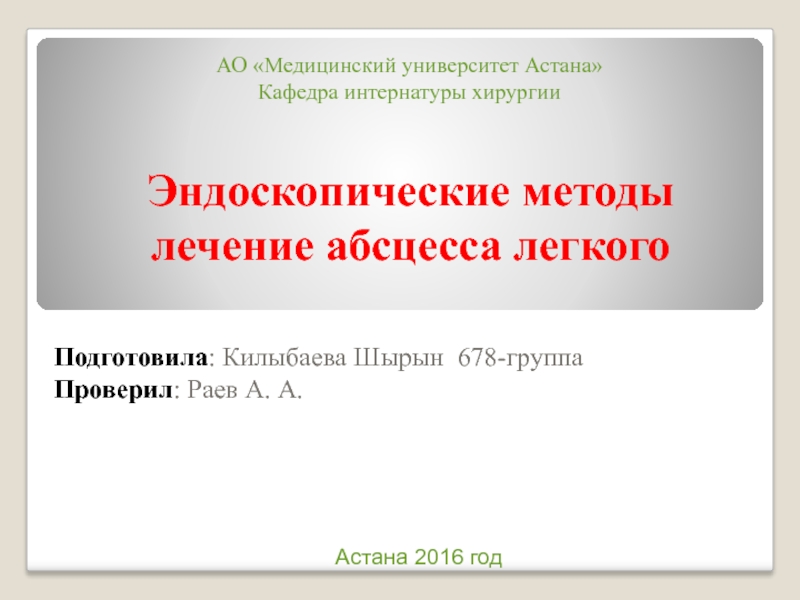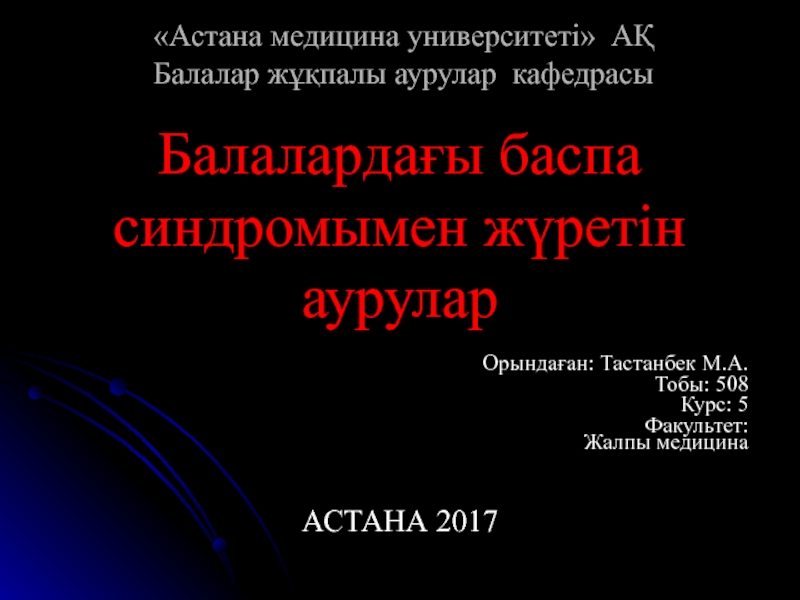- Главная
- Разное
- Дизайн
- Бизнес и предпринимательство
- Аналитика
- Образование
- Развлечения
- Красота и здоровье
- Финансы
- Государство
- Путешествия
- Спорт
- Недвижимость
- Армия
- Графика
- Культурология
- Еда и кулинария
- Лингвистика
- Английский язык
- Астрономия
- Алгебра
- Биология
- География
- Детские презентации
- Информатика
- История
- Литература
- Маркетинг
- Математика
- Медицина
- Менеджмент
- Музыка
- МХК
- Немецкий язык
- ОБЖ
- Обществознание
- Окружающий мир
- Педагогика
- Русский язык
- Технология
- Физика
- Философия
- Химия
- Шаблоны, картинки для презентаций
- Экология
- Экономика
- Юриспруденция
Acute & chronic inflammation презентация
Содержание
- 1. Acute & chronic inflammation
- 2. Inflammation
- 3. The agents causing
- 4. Principles of classification:
- 5. Pathogenesis:
- 6. I. Alteration
- 7. II. Exudation
- 8. Components of an exudate:
- 9. III. Phase of cellular proliferation and renewal
- 13. Types of fibrinous inflammation: It appeared on
- 14. Outcomes of fibrinous inflammation: it is
- 16. Localization of purulent inflammation: in any organs
- 27. Morphology of Pointed сondylomas: Localization: on
- 32. caseous necrosis centrally, domination of epithelioid cells
- 33. solitary, outcome is gross sclerosis. Morphology of
Слайд 1
ZAPOROZHZHIAN STATE MEDICAL UNIVERSITY
The department of pathological anatomy and
Acute & chronic
inflammation
Lecture on pathological anatomy
for the 3-rd year students
Слайд 2
Inflammation
It is a local and biologically expedient reaction of organism as
Classic clinical signs of inflammation:
Heat (calor).
Redness (rubor).
Edema (tumor).
Pain (dolor).
Loss of Function (functio laesa).
Слайд 3
The agents causing
inflammation:
Physical agents (heat, cold, radiation, mechanical injury).
Chemical agents
Infective agents (bacteria, viruses, parasites).
Immunological agents (cell-mediated and antigen-antibody reactions).
Слайд 4Principles of classification:
According to the duration of process:
acute (during 2
subacute (more than 1month),
chronic (months and years).
According to the reason of development:
а) banal (unspecific) – there are any factors of external environment: - physical agents
- toxic chemical agents
- microbiological agents
- immunological agents
b) specific - there are certain infections, such as tuberculosis, Syphilis & so on.
According to morphological features:
а) exudative,
b) proliferative (productive).
Слайд 5Pathogenesis:
Phases of inflammatory process:
Alteration
Exudation
Cell proliferation and renewal of the damaged
The main components of acute and chronic inflammatory responses are:
circulating cells and proteins,
cells of blood vessels,
cells and proteins of the extracellular matrix
Слайд 6I. Alteration
Alteration is the rough damage, degeneration and necrosis of
Слайд 7II. Exudation
– it is a formation of exudate.
The major local manifestations
1) Vascular dilation and increased blood flow (causing erythema and warmth),
2) extravasation and deposition of plasma fluid and proteins (edema),
3) leukocyte and blood cell emigration and accumulation in the site of injury,
4) phagocytosis
5) formation of exudation
6) formation of inflammatory infiltration.
Слайд 8Components of an exudate:
liquid part: plasma albumens
(2-9%), water, ions.
cells
tailings of the blasted tissues
bacteria, which cause inflammation.
Слайд 9III. Phase of cellular proliferation and renewal of the damaged tissue
The
The stimulation of cambial and special cells (their reproduction) began – it is a reparative proliferation under constraint factors of growth of macrophages, thrombocytes, fibroblasts, lymphocytes, endothelium.
Renewal of tissue or organ architectonics. A process is regulated by hormones (architectonics) and immune cells.
Слайд 10
According to prevailing one of these phases, inflammation is classified
Exudative inflammation usually develops as acute, proliferative inflammation – as chronic.
Слайд 11
EXUDATIVE INFLAMMATION
Reasons of development:
- bacteria, chemical factors, physical factors
Localization: skin, serouse
Outcomes:
favorable, renewal of tissues.
It is characterized by predominance of vascular reaction and predominance of exudation (2-3 weeks)
CLASSIFICATION ON MORPHOLOGY OF EXUDATE
(on a prevailing component):
1.Serous inflammation - a lot of liquid and albumens
of plasma (3-8%)
Morphology: erythema and swelling lead to mucosal edema with risk of stenosis.
Слайд 12
2.Fibrinous inflammation
It is acute inflammation with exudation
of fibrin on the mucous
Fibrinous exudate contains large amount of fibrin, neutrophils, and macrophages.
Reasons of development: bacteria, viruses, toxins
Localization: mucous, serous covers, lungs
Слайд 13Types of fibrinous inflammation:
It appeared on the surfaces, covered by a
A. Croupous inflammation – superficial alteration, tapes or filaments of fibrin loosely related to subject tissues, easily
becomes separated from tissue without formation of ulcers and erosions.
B. Diphtheroid inflammation – it is characterized by the deep damage with the formation of the densely soldered tapes of tissue with appearance of ulcerous defects.
Слайд 14Outcomes of fibrinous
inflammation:
it is incomplete restoration with formation of joints
In tubular organs:
In cases of Diphteroid thracheitis fibrin is not protractedly tear away, scars appear after tearing away
In cases of Crupouse thracheitis fibrin is easily torn away and is cleared one's the throat; at children they close the road clearance of bronchyoles → asphyxia.
Слайд 15
3.Purulent inflammation
Macroscopically it is yellow-green pus which covers the edges of
Arises up under influencing of bacteria:
Staphylococci
Streptococci
Mushrooms
– is inflammation with exudate
which consists primarily of neutrophils, cellular
debris (fragments of the blasted tissue), bacteria and plasma albumens
Слайд 16Localization of purulent inflammation: in any organs
B) phlegmon is the diffuse
an abscess is the local, limited hearth of festering inflammation.
Example: Pulmonary abscesses occur after pulmonary infarction or lobar pneumonia.
Morphology: the exudate primarily consists of granulocytes and proteolytic serum components.
Слайд 17
F) empyema – suppurative inflammation in a body‘s serous cavity or
Outcomes:
Renewal of tissue
Formation of fistula
Purulent inflammation:
C) a carbuncle is inflammation of one hair follicle;
D) a furuncle is inflammation of group of hair follicles;
Formation of chronic abscess
Bacteryemia
Sepsis (great number of abscess)
Слайд 18
4. Putrid inflammation
– putrid transformation of exudates with bed smelling.
Reason:
Localization and Outcomes as the same as by festering inflammation
5. Catarrhal inflammation
is formation of exudates rich with mucus
Reason: Bacteria, viruses, temperature, physical and chemical factors
Localization: mucous membranes rich by serous-mucous glands.
Outcomes:
Renewal of structure of the damaged tissue
At the chronic flow → atrophy
Слайд 19
6. Hemorragic inflammation
The exudate is rich by red corpuscles.
Reasons: viruses,
Outcomes: mortal because of exciter action
7. Mixed inflammation - combination of exudates
Слайд 20
Acute inflammation may have one of four outcomes:
1. Complete resolution.
2.
3. Abscess formation, which occurs particularly in infections with pyogenic organisms.
4. An acute inflammation that fails to heal may become chronic inflammation.
Слайд 21
Proliferative (productive) inflammation.
Three major groups of reasons of development can be
Persistent infections by certain intracellular microorganisms, such as tubercle bacilli and certain fungi.
The inflammatory response often takes a specific pattern called a granulomatous reaction.
Слайд 22
Proliferative (productive) inflammation.
Prolonged exposure to nondegradable inanimate material. For example:
Under certain conditions, immune reactions are set up against the individual's own tissues, leading to autoimmune diseases. In these diseases, autoantigens evoke a self-perpetuating immune reaction that results in several important chronic inflammatory diseases, such as rheumatoid arthritis.
Слайд 23
Proliferative (productive) inflammation
is characterized by formation of infiltrates consists of:
mesenchymal
immune cells (T and B-cells, plazmocytes, monocytes cells),
cells of blood.
Слайд 24
Classification of infiltrates:
On prevalence:
а) hearth,
b) diffuse.
On localization:
а) around-vessels,
b) periduсtal,
c) interstitial (in
d) around the areas of necrosis.
Originally:
а) banal – caused by viruses, fungi, simplest, soluble toxins, foreign bodies,
b) specific.
Слайд 25
Forms of banal proliferate inflammation.
Formation of polyps and pointed condylomas.
Interstitial inflammation.
Granulomatous
It is localized: in additional sinuses and mucous membrane of nose, from the protracted inflammatory reaction
Слайд 26
Morphology of polypus:
It is proliferation of vascular-mesenchymal components and epithelium
It is necessary to distinguish inflammatory polyps from tumors, as tumor polyps are excrescence of tumor cells.
Outcomes: regression after the removal of reason.
Reasons: viruses, bacteria (pale treponema), papilloma-virus.
Localization: on the border of mucous membrane and skin (nasal, cervical, colorectal polyps are common).
Outcomes:
1. regression,
2. transformation in a malignant new formation
(papilloma-virus).
Слайд 27Morphology of Pointed сondylomas:
Localization: on the genital organs or the
Condyloma is the growth of squamous cell epithelium and connective tissue of the skin with appearance of numerous small papillae on the surface. In stroma there are dilated vessels, infiltrates of lymphocytes and plasma cells with admixture of leukocytes.
Reasons: viruses, the most frequent Papillomaviruses (also have a carcinogenic effect).
Outcomes:
1. regression,
2. transformation in a malignant tumor.
Слайд 28
Interstitial inflammation
is appearance in organs stroma of inflammatory immune-cellular
Localization: stroma of myocardium, liver, kidney, pancreas.
Reasons: fixed on basal membranes viruses, toxins,
medicines, autoantigens.
Morphology: lymphocytes, plazmocytes, macrophages, eosinophils prevails, mast cells, neutrophils (at the
beginning of process).
Lymphocytes and macrophages, fibroblasts and fibrocytes prevails then.
Outcomes:
complete renewal of organs
tissues (viral diseases),
diffuse sclerosis,
cirrhosis of organ.
Слайд 29
Granulomatous inflammation
is formation in tissues of small knots by a
Localization of granuloma:
around microvessels,
in stroma of organs,
in parenchyma.
Morphological types of granulomas:
granulomas from the immune damage of infection, that activates the immune system (viruses, rickettsia, fungi, bacteria),
granuloma of foreign bodies – at presence of foreign bodies in tissue (dust, stitch material). Foreign bodies are surrounded by macrophages and are formed granuloma.
Слайд 30
Granulomatous inflammation
Stages of forming of granuloma:
damage of tissue and migration
epithelioid cells (transformed monocytes are macrophages of secretor type) surround the areas of necrosis,
many-nuclear macrophages which phagocytized necrotic tissues.
Granuloma Cells:
Macrophages
Epithelioid cells
Multinucleated giant cells
Necrosis may be a feature of some granulomas
Fibrosis
Слайд 31
Specific inflammation
It is proliferative-granulomatous inflammation which is caused by:
mycobacterium tuberculosis,
mycobacterium lepry,
pale
the Volkovicz-Frish’s or klebsyela stick (rhinoscleroma).
Слайд 32caseous necrosis centrally,
domination of epithelioid cells and presence of Langhans' giant
Morphology of tuberculous granuloma:
vessels are absent (or very small amount of capillaries),
miliary and multiple,
outcome is soft sclerosis.
Слайд 33solitary,
outcome is gross sclerosis.
Morphology of syphilis granuloma:
caseous necrosis centrally,
domination of
large amount of capillaries,
Слайд 34
Specific inflammation
Flow: protracted with the periods of intensification (necrotic granulomas) and
Outcomes: scars, deformations of organs, organ insufficiency.
